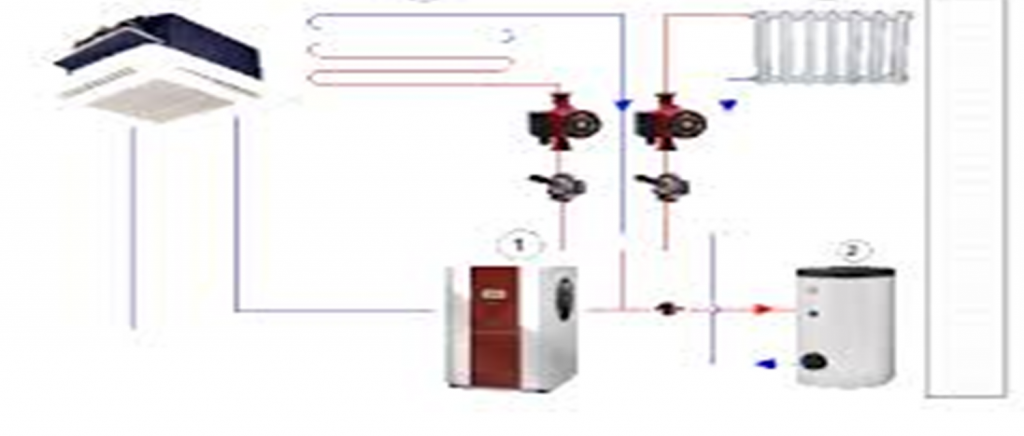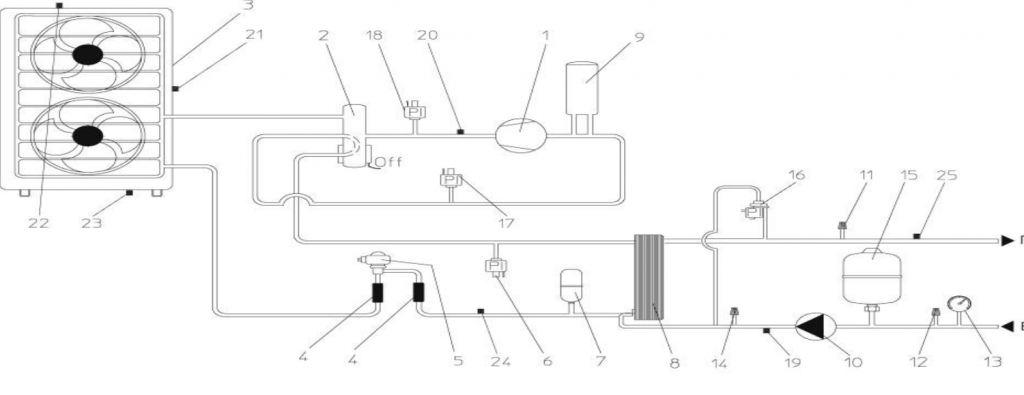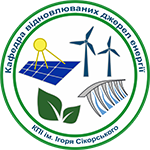Ukrainian-Polish Center of Excellence in Renewable Energy and Energy Efficiency
Head of the Department: Professor S. A. Kudrja, DSc. Head of the Centrer: Assistant Y.P.Favorskyy
Rationale project:
Given Ukraine’s economy depends on imported energy raises the question of renewable energy sources (RES) and energy efficiency technologies. For mass adoption of technologies that use renewable energy sources, as necessary dissemination of information in society, and preparation of engineering, technical and other (related) personnel for the industry. In pursuance of the objectives and commitments by Ukraine as a member of the European Energy Charter emerged feasibility of establishing the ” Ukrainian-Polish Center of Excellence in Renewable Energy and Energy Efficiency ” and its basic element – teaching science class. Department staff renewables “KPI” with experience in state budgetary research topics in “converting renewable energy”
The base of the chair are the Department of renewable energy sources, which employs highly qualified teaching staff, which includes two State Prize winner, the member of the National Academy of Sciences of Ukraine, five doctors of engineering, physical and mathematical sciences, four candidates of technical sciences.
All teachers are leading scientists in charge of Ukraine in research and development in renewable energy and the design and construction of power plants from such sources
Rationale for implementation:
The department has operated for the needs of the educational process and providing real energy building number 20 next system:
- Heat pump turbine type “air-water” for hot water supply. Maximum heat output of 5 kW maximum electrical power 1.7 kW. The heat pump is equipped with a tank-storage capacity of 210 liters, which is capable of heating up to 60 ° C approximately 4 hour
- Hot water system consists of two solar collectors 20 vacuum tubes, two tanks – 100 liters of storage. Estimated performance of each facility 100 liters of hot water per day.
Aim:
Improve the educational process with the use of renewable energy sources and energy using equipment produced in Poland.
Ensure that experts “KPI” and Ukraine in general interested in commercializing research, access to information about using modern technologies of renewable energy and energy efficiency in the EU, in particular – to Poland.
Help scientists NTU “KPI” in the preparation of international projects using modern technologies of renewable energy and energy efficiency together with universities in Poland, deepening Ukrainian-Polish cooperation in this area as a whole.
Contribution to the implementation of the project from the Polish Embassy in UKRAINE:
purchase of equipment and monitoring systems in the amount of 47 thousand € by the “Polish aid” of the Ministry of Foreign Affairs of Poland, payment of repairs, payment site creation center.
CONTRIBUTION FROM NTU “KPI”:
provision of premises, utilities and communication services, the use of a server with Internet access, the costs of staff of NTU “KPI” to create the Center.
MILESTONES AND CONTENTS OF THE PROJECT:
1. Prepare and organize information about the possibility of implementing new technologies in renewable energy and energy efficiency NTU “KPI”:
- analysis of new technologies and renewable energy that can be used in NTU “KPI” project;
- choice of objects and possible technologies for renewable energy and energy efficiency within the project in NTU “KPI”;
- conceptual and operational projects for the utilization of renewable energy sources and energy efficiency and the project in NTU “KPI“..
2. Creating an educational class ” Ukrainian-Polish Center of Excellence in Renewable Energy and Energy Efficiency ” in NTU “KPI”:
- creation and installation of the stand heat pump equipment;
- creation and installation of thermal solar energy stand;
- creation and installation of energy efficiency stand.
3. Creating a system of monitoring and distribution obtained in the monitoring of information:
- involved in monitoring data obtained from the stands;
- installation of monitoring and setup a single server processing stands and weather conditions;
- creation website upc-re.kpi.ua by which is organized database access statistics of the stands, and the integration of the Centre international educational and scientific information and innovative space
Which is mounted in the center:


| Heating power, kW (A7 / W50) | 15,6 |
| Power consumption, kWh (A7 / W50) | 6 |
| CPO | 2,6 |
| MIN coolant flow (heating circuit), m3/ h | 3,45 |
| Airflow min / avg / max, m3 / h | 5400/6400/7600 |
| The maximum heating temperature | 60°С |
| Number of compressors | 2 |
| Compressor | Spiral |
| Fan power, W | 250х2 |
| Coolant | R407C |
| Noise level, dB (A) | 58 |



The building № 30 (Institute of Telecommunication Systems) installed hot water system, consisting of 3 total solar collector area of 6 m2 and storage tank capacity of 300 liters to the roof of the building №30. This system – as part of the Center – included in the overall monitoring system and curriculum class, by means of information and communication technologies.


Stand solar collector building № 30


Stand Window Technologies


Stand the temperature distribution in the radiator


Results achieved:
1.Apply one heat pump (HP) capacity of 15.6 kW thermal for heating a total area of 150 m2 allows for the heating period to produce 16432kVt kWh (14.1 Gcal) heat .
In summer and spring HP provides air space.
The social aspect of the HP implementation and creation of a training class on renewable energy and energy efficiency:
– improving the conditions for learning by creating a comfortable temperature conditions in the classroom, which currently do not meet sanitary requirements.
2.Implementation of the solar system with 6 m2 collector area and storage tank volume of 300 liters for hot water (HW) building №30 NTU “KPI” allows a year to produce 2500 kWh of thermal energy.
The social aspect of the introduction of solar HW and creating training class:
– improvement of the learning environment by hot water, which is currently №30 in the building is missing.
3. Creating an educational class energy efficiency, including: installation of plastic windows with different types of glass.
To monitor and analyze the annual heat loss and the heat will be installed on the surfaces of insulating glass thermometers. These thermometers will be wound up on the controller where they will calculateed and printed out on-line and off-line.
The social aspect of creating an educational class on energy efficiency:
– dissemination of energy-saving technologies and improve their learning process by creating a more comfortable temperature conditions in the classroom and by reducing heat loss.




